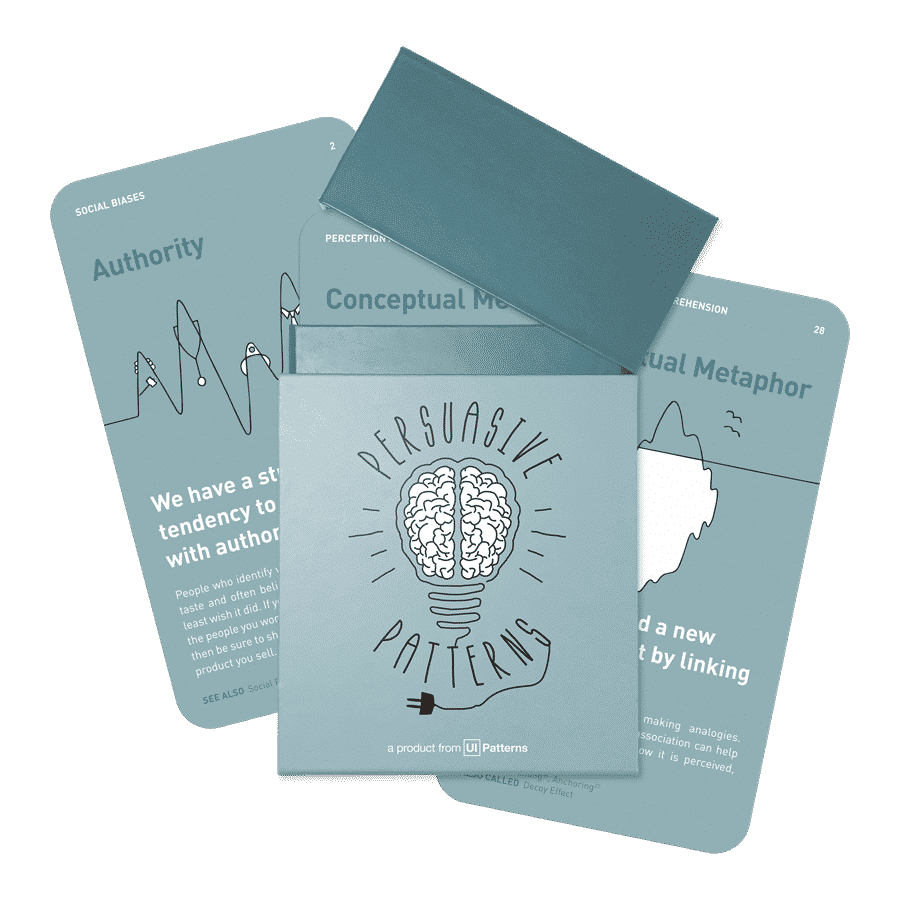How Target, Walmart, and Home Depot hacks your shopping script
Walmart's secret weapon: disrupting your shopping routines to boost sales.
Boost engagement with the Persuasive Patterns card deck
Leverage behavioral design techniques to create experiences that users love.
Get your deck!Have you ever wandered into a large retailer like Target, Walmart of Home Depot, intending to grab just a few essentials, only to emerge with a cart overflowing with unexpected purchases? It’s not magic – it’s psychology.
As retail giants, these chains has mastered the art of influencing shopper behavior through a fascinating tactic: disrupting your behavioral scripts. A behavioral script is the set of expectations we have for how things will unfold in a particular situation, shaped by our routines and habits.They form through repeated actions, and because we follow them regularly, they become predictable and familiar.

These scripts are the unconscious routines we follow in everyday situations, like shopping. We expect to walk down aisles, browse products neatly displayed on shelves, and perhaps grab a shopping list item or two.
But large retailers throws a wrench in this script in each of their own way. Target with Endcaps, Walmart with Action Alley, and Home Depot with Power Aisles. Imagine yourself walking down an aisle, on autopilot, focused on your list. Suddenly, you encounter a sea of discounted merchandise on towering pallets or focused walls – that’s these concepts in full effect.
These areas are designated areas within their stores. Here, you’ll find a curated selection of items strategically placed on pallets, display tables, so that they can grab the customer’s attention. These are usually products on sale, clearance items, or seasonal offerings.
What’s happening in these moments goes beyond simple product placement. Retailers are leveraging key psychological principles like Scarcity Bias, Salience, and the Curiosity Effect to break your shopping routine and encourage you to make unplanned purchases. Let’s explore how each store uses these tactics differently.
Scarcity Bias
Scarcity Bias makes us value items more when they seem limited in supply or time. Retailers harness this to create a sense of urgency, driving impulse purchases based on the fear of missing out.
Walmart’s Action Alley is a key example of how scarcity is used to fuel purchases. As you navigate the aisles, you encounter towering displays of bulk goods or heavily discounted items. Often, these displays are framed with signage like “Limited Time Only” or “Clearance,” creating the impression that you need to act quickly before the items run out. The sheer volume of goods may seem abundant, but the messaging makes it clear: these deals won’t last forever.
Target’s endcaps take a more curated approach. These limited displays often feature just a few of each product, signaling exclusivity or rarity. The small quantities, paired with promotions like “while supplies last,” encourage you to grab an item before it disappears. This approach enhances the sense of scarcity by suggesting that only a few lucky shoppers will get the deal, even if it’s a widely available product elsewhere in the store.
Home Depot’s Power Aisles feature seasonal and high-demand items, like outdoor furniture in the summer or holiday decorations in winter. These products are often showcased with limited-time offers, reinforcing scarcity through the idea that these items are tied to specific seasons. The large displays are hard to miss, and the seasonal nature of the products tells you that if you don’t buy now, you’ll miss the chance until next year.
Salience
Salience refers to how much something stands out from its surroundings. Retailers rely on this principle to draw attention to their most important products or deals.
At Walmart, Action Alley disrupts your shopping routine by placing large, bulky displays right in the middle of your path. These massive towers of merchandise are impossible to ignore, breaking your focus and compelling you to check out the deals. The sheer size and positioning of these displays ensure that even the most focused shopper will have their attention diverted.
Target’s endcaps are placed at the intersection of aisles, where you’re likely to be transitioning from one product category to another. This placement is a prime spot to grab your attention when you’re least expecting it. The clean, minimalist design of the endcap ensures that products stand out against the busier shelving in the aisles, making these displays highly salient.
Home Depot’s Power Aisles use size to grab your attention. The products featured here—tools, outdoor equipment, or seasonal goods—are often large and prominently displayed near the entrance or in central aisles. The layout ensures these items are the first thing you see, making them the most visually salient part of the store. The combination of size and prominent placement ensures that shoppers can’t miss these items, regardless of what they originally came to buy.
Curiosity Effect
The Curiosity Effect comes into play when something unexpected or novel catches our attention, encouraging us to explore and investigate further. Retailers use this to make shoppers pause and browse, even if they had no intention of doing so.
In Walmart, the Action Alley triggers curiosity by offering a wide range of products you wouldn’t expect to find together. The eclectic mix—ranging from bulk groceries to electronics—compels shoppers to stop and investigate. The randomness of the assortment piques curiosity, encouraging shoppers to spend more time exploring and often leading to unplanned purchases.
Target’s endcaps are designed to pique curiosity by offering limited selections of seasonal or trendy items. You may be walking through the store for groceries, but an endcap featuring exclusive home decor or an unexpected product line tempts you to pause and explore. The sense that these items are special or unique makes shoppers stop, even if they’re not on their list.
Home Depot taps into curiosity with Power Aisles that rotate their offerings based on seasons or promotions. One month you might find holiday lights, and the next it’s a display of patio furniture. This constant change encourages repeat visits and keeps customers engaged as they wonder what the next Power Aisle will feature. The possibility of discovering something new or relevant to an ongoing project draws customers into browsing beyond their initial intent.
Whether it’s the imposing displays of Walmart’s Action Alley, the curated exclusivity of Target’s Endcaps, or the seasonal focus of Home Depot’s Power Aisles, retailers expertly break your behavioral shopping scripts to guide you toward unplanned purchases.
Whey they work:
-
They disrupt and grab attention. They disrupt your shopping flow. While you might be focused on list items on the shelves, the unexpected obstacle of merchandise displays forces you to pause and pay attention.
-
This pause creates an opportunity for impulse browsing. You might encounter enticing deals you weren’t initially looking for, potentially leading to unplanned purchases.
-
It triggers our Scarcity mentality. Seeing large quantities of discounted products can trigger the fear of missing out (FOMO). You might be tempted to grab a deal before they’re gone, even if it wasn’t on your list.
By creating visually appealing displays and strategically placing them to disrupt consumer routines, brands can increase product visibility and potentially drive sales.
While this is just one example utilized by Walmart, the world of product psychology holds a treasure trove of valuable tactics. The Persuasive Patterns card deck empowers design teams to explore these psychological principles through interactive workshops. Designed for practical application, the cards provide actionable tips and insights on influencing user behavior – ethically and effectively.
- How Walmart used psychology to become the world’s largest retailer by Jen Clinehens
- Nudge: Improving decisions about health, wealth, and happiness. by Thaler, R. H., & Sunstein, C.
- Walmart's Pricing, Quality Perception, and Customer Loyalty Through the Lens of Behavioral Economics by W Pan
